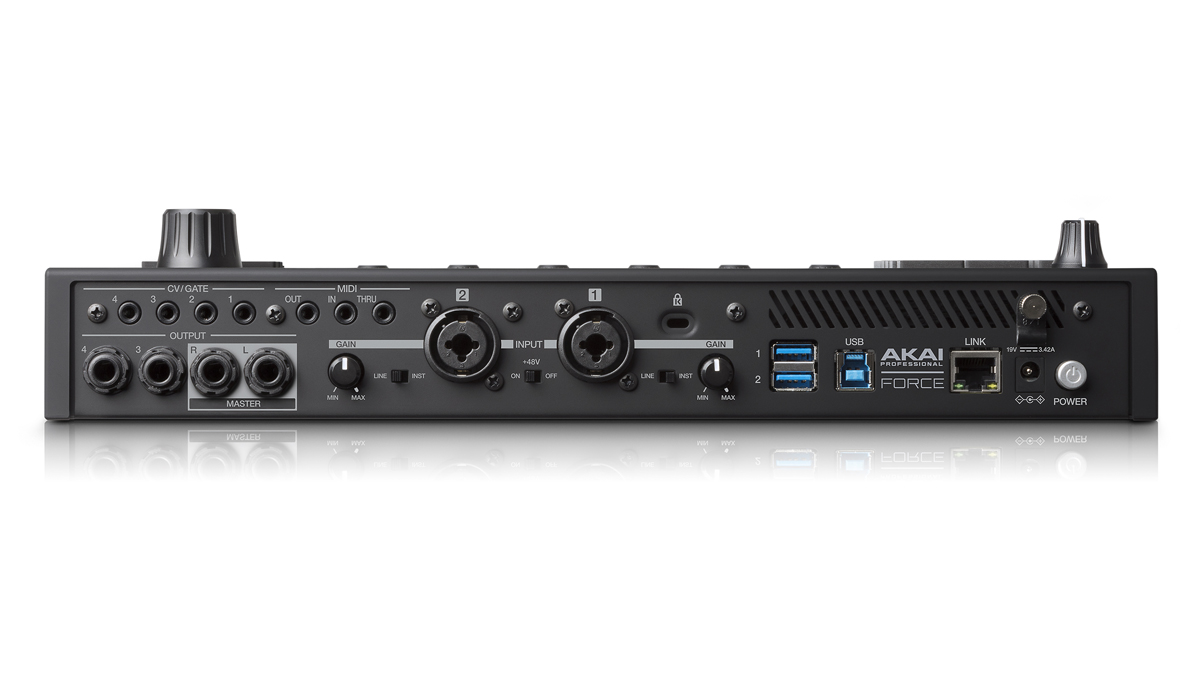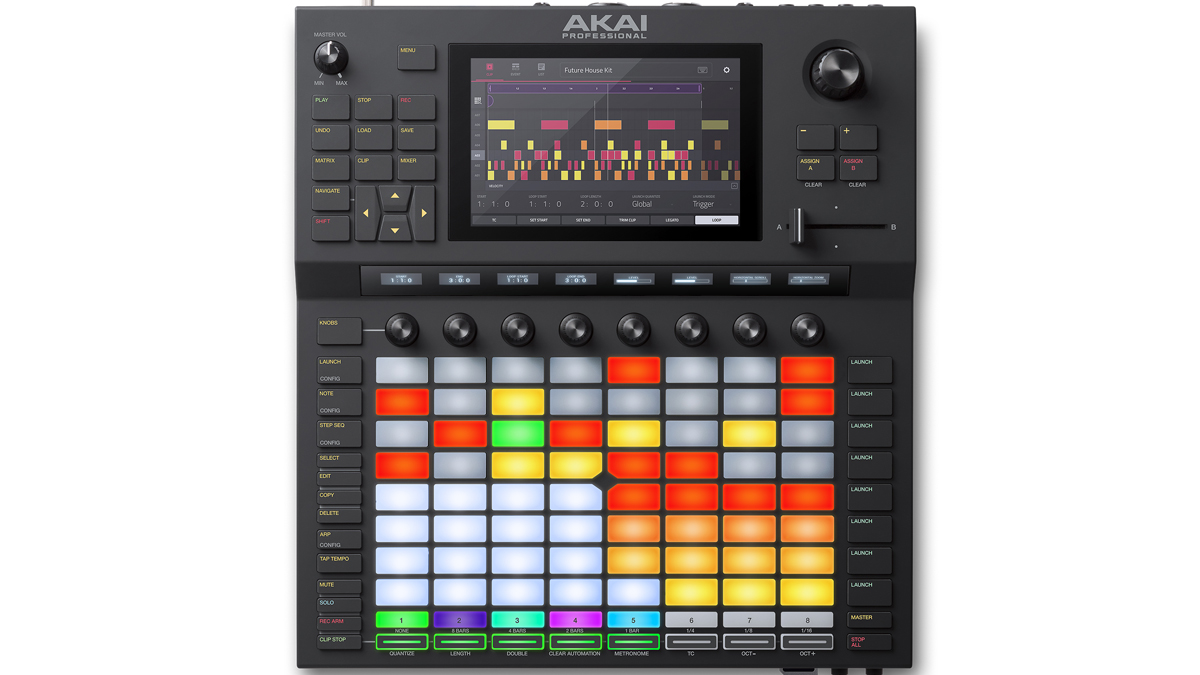NAMM 2019: Akai Pro unveils Force, a standalone production instrument that promises an Ableton Live-style workflow without a computer
Clip launching, recording, synths, MIDI support and more
NAMM 2019: Hybrid music production and performance platforms – we’re thinking of the likes of NI’s Maschine and the Ableton Live/Push combination – have been with us for a while now, so there’s obviously been speculation that, one day, someone would eliminate the need for a computer and produce a completely standalone device. Well, Akai Pro has now taken the plunge and announced Force, a self-contained ‘production instrument’ that adheres to the clip-based workflow that many of us are so drawn to.
In some ways, this is a natural next step for Akai, which released a couple of standalone MPC devices - MPC Live and and MPC X - in 2017, but it’s still a bold one. The company is banking on the fact that there enough people out there who are dissatisfied enough with the software/hardware status quo to seek out an alternative, so what exactly does Force offer?
Full Force
As well as clip launching, via an 8x8 RGB matrix, there’s also step sequencing, sampling, effects and a selection of built-in synths (TubeSynth, Bassline, Electric and Hype), while everything can be controlled from a 7-inch multitouch display. The eight touch-sensitive knobs have graphical OLED displays, while connectivity comprises two audio inputs, four audio outputs, MIDI and CV I/O.
What this means is that you can record directly into Force - there are mic, instrument and line-level inputs - and hook a MIDI controller up to it, while the CV/Gate support means that it can be integrated with your modular gear, too. There are eight stereo tracks (realtime timestretching and pitchshifting are supported) and 16GB of onboard storage, which can be expanded thanks to the inclusion of an SD card slot and USB 3.0 ports. There’s also a 2.5-inch SATA drive connector, giving you even more storage options.

"Force is aptly named, since this unit truly delivers a new level of creative force and energy to the music production/DJ performance world,” said Dan Gill, Akai Professional Product Manager. “With its Ableton Live-style workflow, 8x8 clip launch matrix, touch-sensitive knobs with graphical OLED displays and 7-inch multi-touch display and total freedom from the computer, users will experience a degree of creative expression and spontaneity they simply can’t find anywhere else.”
Live integration
Although Force is a completely standalone product, Akai says that Ableton Live integration is on the roadmap. The company states that “this functionality will include total visibility and command of Ableton’s clip matrix, tactile control of core mixer parameters including crossfader assignments, and control of device parameters instantiated in Ableton Live’s workspace via the touch user interface and Force’s rotary encoders/OLED displays”. Integration with Splice, the online soundware resource, is on the cards, too.
Nonetheless, if Force is going to succeed, it’ll need to be able to stand on its own two feet. There are benefits to making music on a self-contained device, but it remains to be seen how many of us are willing to forego the flexibility that a computer-based setup affords - plugin support, to give you just one example - and go standalone.
Get the MusicRadar Newsletter
Want all the hottest music and gear news, reviews, deals, features and more, direct to your inbox? Sign up here.
We’ll get our first taste of what Force has to offer at NAMM 2019, and it’ll be shipping in February priced at $1,499. Find out more on the Akai Pro website.


I’m the Deputy Editor of MusicRadar, having worked on the site since its launch in 2007. I previously spent eight years working on our sister magazine, Computer Music. I’ve been playing the piano, gigging in bands and failing to finish tracks at home for more than 30 years, 24 of which I’ve also spent writing about music and the ever-changing technology used to make it.









